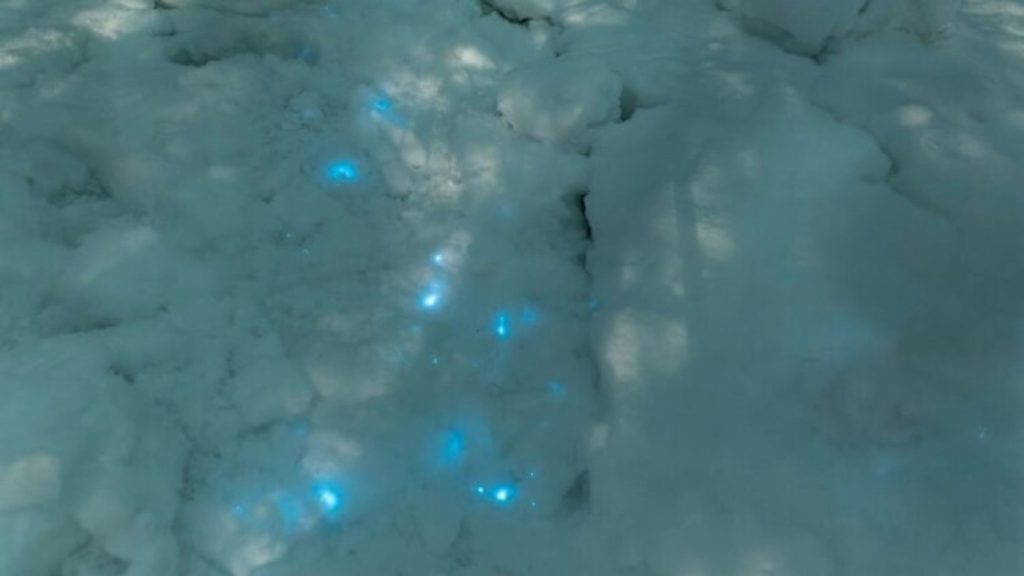Russia has bioluminescent snow that glows blue.
Last month, Russian biologist Vera Emelianenko went outside for a walk to the White Sea coast, high in the Russian Arctic, and noticed something strange. It was a blue light that looked like Christmas lights. Mikhail Neretin, the son of a molecular biologist working at the same remote field station, and two dogs were with Vera at the time. It was Neretin who first noticed the strange blue glow, and as they walked to investigate, they noticed that their footsteps created streaks of ethereal blue. When they squeezed the snow in their hands, it glowed brighter.
Vera went back and asked Alexander Semenov to accompany her so they could document the phenomenon. For about two hours, they both stomped the snow to make it glow, and Semenov took photos that later went viral on social media.
The next day, Vera Emelianenko observed the glowing snow under a microscope and waited for it to melt. She found some copepods, tiny aquatic crustaceans, in the petri dish. When she poked them with a needle, they lit up a faint blue. It was revealed that these creatures were causing the snow to glowing blue.
These creatures are called “the bugs of the sea” and are typically found in the ocean at depths of up to 100 meters during the night, but just a few feet at night, when they can cause the eye-catching bioluminescence phenomenon on beaches.
The Russian biological station has been open for 80 years and yet, this was the first time these creatures came under its attention. Ksenia Kosobokova, an expert on Arctic marine zooplankton at Russia’s Academy of Science in Moscow, said that the rare phenomenon may have been the result of copepods being caught in a powerful current that pushed them ashore and into the snow

